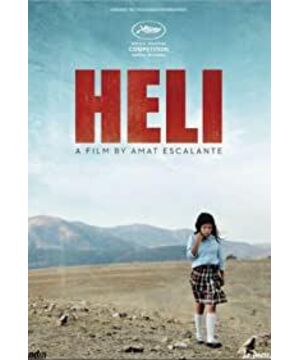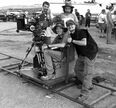The Cannes Film Festival awarded the Best Director Award to the Mexicans for two consecutive years in 2013 and 2014, but they missed the well-known "Mexican Three Heroes". Both winners are the direct line directors who were cultivated and grown by Cannes: Carlos Legadas and Amat Escalante. The reputation of the works of the two authors and directors who participated in the competition was not very good, and the scores of the field magazines were ranked in the middle and lower reaches. Compared to Legadas's obscure and private experience, "The Dark Willow", Iscalate's "Toxic Storm" has a broader and more compelling subject: Mexico's drug problem; and the film is characterized by extreme violence. The nakedness of the film shocked the audience, and even surprised many film critics when he finally won the award! This situation is exactly the same as that in 2009, when the Filipino director Mandoza won the best director for "Kinari". Invariably, the two films have adopted almost curious methods to expose the dark side of the country and society, but it cannot be ignored that the two films still show the unremitting pursuit of the two directors in aesthetic style. Amat Iscarat Escalante)'s previous works "Blood" and "Bastard" were shortlisted for a kind of attention unit. Compared with the first two fledgling techniques and relatively flimsy plots, this first-time shortlisted film has undoubtedly improved in quality. The director's style has also become more mature. First of all, the director's choice of subject matter follows the tradition of the past. The last one discussed the issue of illegal immigration, and this one is the more popular issue of drug trafficking. There is often such a point of view: the director chooses to shoot the subject of the dark side of the country, often to win awards at international film festivals. Our director Zhang Yimou has been criticized the most, and the sixth-generation directors after that have been followed by dark themes. But in my opinion, the subject matter of any film from the third world/developing country will inevitably have the curious color that Westerners see. The most important thing is whether the director can insist on presenting objective facts in an artistic way and maintain rationality. Conscience and social critical awareness, rather than just using opportunistic methods to win the public's attention. This work is still unavoidably suspected of opportunism, and the extremely cruel and violent depictions, for example, the two images of hanging a corpse on a bridge and burning the lower body on fire, are unbearable to look at. However, this unadorned violent presentation also makes the audience think about the social reality of Mexico at the same time. In a country where drugs are so rampant, when we see someone put to death, we naturally first think of drug dealers or the target of gang vendetta, but rarely think of innocent poor people. The director's choice of this innocent person's point of view to cut into the narrative has profound significance, allowing the audience to examine how ordinary people are gradually involved in the doomed drug vortex in a calm life with a more objective and calm gaze. The tragic origin of the hero's mistreatment, the death of his father, and the rape of his sister can be said to have little to do with drugs. It was just triggered by the younger sister falling in love with the SWAT trainee. Drugs are the catalyst for the narrative in this process. . As for the hero's behavior of destroying drugs after discovering drugs, it proves his integrity and kindness who wants to stay away from drugs. But unexpectedly, in this country, anyone who has nothing to do with drugs can also be involved in the drug crisis and be killed at any time. The drug problem has long been rooted in society (government officials, police, drug dealers), and even has an intricate relationship with every ordinary person. This perspective of innocent people involved in the narrative will make the audience gradually realize the seriousness of the drug problem in Mexico. The first half of the film uses documentary-style footage to depict the daily life of the male protagonist and his family. He works night shifts in a machinery factory, his wife takes care of the children, and his sister attends school. There are subtle undercurrents lurking in these mundane and peaceful events in the picture. With the sister and the SWAT trainee Going deeper, the drug problem begins to surface, and a faint sense of unease begins to appear in the plot. The sudden violent attack by the special police quickly broke this fragile balance, and the tension of the atmosphere expanded sharply. And the subsequent abuse episodes quietly create a shocking visual impact in the daily environment. The combination of the documentary style and the perspective of the innocent makes the film's sense of horror and dramatic tension gradually escalated. Most of the non-professional actors showed a dull appearance under the training of the director, a little bit like the film master Bresson, they did not reveal or vent their emotions too much in front of the camera, and showed extreme restraint and precision. Through this stylized treatment, the director effectively controls the plot away from too frequent dramatic performance, and tries his best to portray the normal life of the characters who are trying to maintain a peaceful life under the crisis. If the first half shows the heavy blow that drugs have brought to ordinary families, then the second half tells the plot of the protagonist's return to life, which makes people think more about the far-reaching effects of this tragedy on the survivors' character and behavior and future life. Influence. After her sister came home from the brutality, she became withdrawn, unable to communicate with her family and friends normally all day long. The honest and kind-hearted protagonist has become manic and irritable, violent to his wife from time to time, and lack of concentration at work, resulting in unemployment. In the end, he would spare no effort to find the perpetrator of his sister's violence, and use the same terrible violence to kill each other with his own hands. The second half of the narrative is more restrained and restrained than the first half, with fewer dialogue lines and more empty shots. At the same time, the environment is used to convey the psychological state of the characters, revealing mysterious poetry from time to time. For example, the military police car in front of the house and the cactus under the night, these seemingly embellished symbols inadvertently render an elusive atmosphere. As a result, the impact of the drug problem on ordinary people has finally come to the fore. It will only continue to breed violence, and the use of violence to suppress violence will not end the impact of drugs, but will only breed more terrible violence. In the process of drug warfare, not only will you not be able to get out of the way, you may even become a new perpetrator. This may be the most terrifying consequence. . Through this stylized treatment, the director effectively controls the plot away from too frequent dramatic performance, and tries his best to portray the normal life of the characters who are trying to maintain a peaceful life under the crisis. If the first half shows the heavy blow that drugs have brought to ordinary families, then the second half tells the plot of the protagonist's return to life, which makes people think more about the far-reaching effects of this tragedy on the survivors' character and behavior and future life. Influence. After her sister came home from the brutality, she became withdrawn, unable to communicate with her family and friends normally all day long. The honest and kind-hearted protagonist has become manic and irritable, violent to his wife from time to time, and lack of concentration at work, resulting in unemployment. In the end, he would spare no effort to find the perpetrator of his sister's violence, and use the same terrible violence to kill each other with his own hands. The second half of the narrative is more restrained and restrained than the first half, with fewer dialogue lines and more empty shots. At the same time, the environment is used to convey the psychological state of the characters, revealing mysterious poetry from time to time. For example, the military police car in front of the house and the cactus under the night, these seemingly embellished symbols inadvertently render an elusive atmosphere. As a result, the impact of the drug problem on ordinary people has finally come to the fore. It will only continue to breed violence, and the use of violence to suppress violence will not end the impact of drugs, but will only breed more terrible violence. In the process of drug warfare, not only will you not be able to get out of the way, you may even become a new perpetrator. This may be the most terrifying consequence. . Through this stylized treatment, the director effectively controls the plot away from too frequent dramatic performance, and tries his best to portray the normal life of the characters who are trying to maintain a peaceful life under the crisis. If the first half shows the heavy blow that drugs have brought to ordinary families, then the second half tells the plot of the protagonist's return to life, which makes people think more about the far-reaching effects of this tragedy on the survivors' character and behavior and future life. Influence. After her sister came home from the brutality, she became withdrawn, unable to communicate with her family and friends normally all day long. The honest and kind-hearted protagonist has become manic and irritable, violent to his wife from time to time, and lack of concentration at work, resulting in unemployment. In the end, he would spare no effort to find the perpetrator of his sister's violence, and use the same terrible violence to kill each other with his own hands. The second half of the narrative is more restrained and restrained than the first half, with fewer dialogue lines and more empty shots. At the same time, the environment is used to convey the psychological state of the characters, revealing mysterious poetry from time to time. For example, the military police car in front of the house and the cactus under the night, these seemingly embellished symbols inadvertently render an elusive atmosphere. As a result, the impact of the drug problem on ordinary people has finally come to the fore. It will only continue to breed violence, and the use of violence to suppress violence will not end the impact of drugs, but will only breed more terrible violence. In the process of drug warfare, not only will you not be able to get out of the way, you may even become a new perpetrator. This may be the most terrifying consequence. More horrific violence breeds; innocents are not only unable to escape the process of fighting drugs, but may even become new perpetrators. This may be the most terrifying consequence. More horrific violence breeds; innocents are not only unable to escape the process of fighting drugs, but may even become new perpetrators. This may be the most terrifying consequence.
View more about Heli reviews










